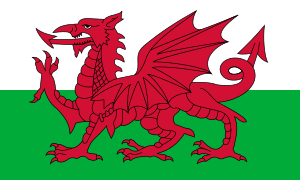National Assembly for Wales election, 2016
| | |||||||||||||||||||||||||||||||||||||||||||||||||||||||||||||||
| |||||||||||||||||||||||||||||||||||||||||||||||||||||||||||||||
| |||||||||||||||||||||||||||||||||||||||||||||||||||||||||||||||
| |||||||||||||||||||||||||||||||||||||||||||||||||||||||||||||||
 |
| This article is part of a series on the politics and government of Wales |
|
Law and justice |
|
Wales in the EU |
|
Administrative divisions |
|
British politics portal |
The National Assembly for Wales election 2016 is the next election for the National Assembly. The poll will be held on Thursday, 5 May 2016 and will decide the incumbency for all the assembly's seats. It will be the fifth election for seats in the National Assembly for Wales (previous elections having been held in 1999, 2003, 2007 and 2011), and the third election taken under the rules of the Government of Wales Act 2006 (though several rules have now been changed by the Wales Act 2014).
The previous election resulted in gains for the then incumbent Welsh Labour Party, which gained four seats compared to the previous election and currently holds 30 seats, exactly half of the Assembly, one short of an overall majority. The party also secured a swing in its favour of over 10 percentage points. The Welsh Conservatives are currently the largest opposition party with 14 seats, a net gain of two from 2007, but former party leader Nick Bourne lost his seat. The junior party in the government coalition, the nationalist Plaid Cymru, suffered a drop in its vote and lost 4 seats. The Welsh Liberal Democrats lost significantly in the popular vote and returned five AMs, a loss of one.[1])
British, Irish, Commonwealth and European Union citizens living in Wales aged eighteen or over on election day will be entitled to vote. It will be held on the same day as elections for the Scottish Parliament, the Northern Irish Assembly and a number of local elections in England. This election and elections to the other devolved chambers have been delayed by a year from 2015 to 2016. This is a result of the Fixed-term Parliaments Act 2011, which ensured that the Next United Kingdom general election will take place on 7 May 2015.[2] General elections to the Welsh Assembly have now been permanently moved to a five-year cycle with the Wales Act 2014.
Electoral method
In general elections for the National Assembly for Wales, each voter has two votes in a mixed member system. The first vote may be used to vote for a candidate to become the Assembly Member for the voter's constituency, elected by the first past the post system. The second vote may be used to vote for a regional closed party list of candidates. Additional member seats are allocated from the lists by the d'Hondt method, with constituency results being taken into account in the allocation. The overall result is approximately proportional.
The previous restriction on the ability to stand in both a constituency and a regional list was lifted by the Wales Act 2014. The Act also removes the ability to dual mandate with the House of Commons — an Assembly member will no longer allowed to also be an MP.
Opinion polls
Constituency Vote (FPTP)
| Date(s) conducted | Polling organisation/client | Sample size | Lab | Cons | Plaid | Lib Dem | UKIP | Others | Lead |
|---|---|---|---|---|---|---|---|---|---|
| 5 - 9 March 2015 | YouGov/ITV Wales | 1,279 | 37% | 22% | 20% | 6% | 11% | 5% | 15% |
| 19 - 21 January 2015 | YouGov/ITV Wales | 1,036 | 34% | 21% | 18% | 7% | 13% | 7% | 13% |
| 2 - 5 December 2014 | YouGov/ITV Wales | 1,131 | 35% | 22% | 19% | 6% | 12% | 6% | 13% |
| 8 – 11 September 2014 | YouGov/ITV Wales | 1,025 | 36% | 21% | 19% | 6% | 12% | 6% | 15% |
| 26 June – 1 July 2014 | YouGov/ITV Wales | 1,035 | 39% | 20% | 19% | 8% | 13% | 5% | 19% |
| 11–22 April 2014 | YouGov/IPPR, Cardiff University, Edinburgh University | 1,027 | 41% | 21% | 20% | 8% | 7% | 2% | 20% |
| 10–12 February 2014 | YouGov/ITV Wales | 1,250 | 42% | 21% | 19% | 9% | 5% | 3% | 21% |
| 2–4 December 2013 | YouGov/ITV Wales | 1,001 | 43% | 19% | 20% | 9% | 7% | 3% | 23% |
| 18–22 July 2013 | YouGov/Elections in Wales Blog | 1,012 | 47% | 19% | 17% | 8% | 6% | 3% | 28% |
| 28 Feb 2013 | Ynys Môn by-election, 2013 | ||||||||
| 18-20 Feb 2013 | YouGov/ITV Wales | 1,007 | 46% | 21% | 17% | 10% | 5% | 2% | 25% |
| 5 May 2011 | National Assembly for Wales election, 2011 (constituency) | 949,252 | 42.3% | 25.0% | 19.3% | 10.6% | N/A | 2.8% | 17.3% |
Regional Vote (AMS)
| Date(s) conducted | Polling organisation/client | Sample size | Lab | Cons | Plaid | Lib Dem | UKIP | Green | Others | Lead |
|---|---|---|---|---|---|---|---|---|---|---|
| 5–9 March 2015 | YouGov/ITV Wales | 1,279 | 33% | 22% | 21% | 5% | 12% | 5% | 2% | 11% |
| 19–21 January 2015 [fn 1] | YouGov/ITV Wales | 1,036 | 32% | 20% | 15% | 8% | 16% | 8% | 2% | 12% |
| 2–5 December 2014 | YouGov/ITV Wales | 1,131 | 31% | 20% | 19% | 6% | 15% | 7% | 2% | 11% |
| 8 - 11 September 2014 | YouGov/ITV Wales | 1,025 | 31% | 21% | 16% | 5% | 17% | 7% | 3% | 10% |
| 26 June – 1 July 2014 | YouGov/ITV Wales | 1,035 | 34% | 21% | 18% | 5% | 16% | 4% | 3% | 13% |
| 12 – 14 May 2014 | YouGov/ITV Wales | 1,092 | 35% | 19% | 17% | 7% | 14% | 6% | 2% | 16% |
| 11–22 April 2014 | YouGov/IPPR, Cardiff University, Edinburgh University | 1,027 | 37% | 21% | 19% | 7% | 10% | 4% | 2% | 16% |
| 10–12 February 2014 | YouGov/ITV Wales | 1,250 | 39% | 19% | 17% | 9% | 10% | 6% | 20% | |
| 2–4 December 2013 | YouGov/ITV Wales | 1,001 | 40% | 19% | 15% | 9% | 10% | 7% | 21% | |
| 18–22 July 2013 | YouGov/Elections in Wales Blog | 1,012 | 25% | 12% | 23% | 9% | 16% | 14% | 2% | |
| 28 Feb 2013 | Ynys Môn by-election, 2013 | |||||||||
| 18-20 Feb 2013 | YouGov/ITV Wales | 1,007 | 26% | 14% | 26% | 8% | 13% | 6% | 7% | Tie |
| 5 May 2011 | National Assembly for Wales election, 2011 (regional) | 949,388 | 36.9% | 22.5% | 17.9% | 8.0% | 4.6% | 3.4% | 6.7% | 14.4% |
See also
- Scottish Parliament general election, 2016
- Northern Ireland Assembly election, 2016
- London mayoral election, 2016
- Opinion polling for the next United Kingdom general election
- Ynys Môn by-election, 2013
References
- ↑ name="Wales Elections">"Assembly national votes and seats by party, and links to constituency results". BBC Online. 16 March 2011. Retrieved 26 October 2013.
- ↑ Fixed-term Parliaments Act 2011 section 5
| ||||||||||
- ↑ Seat estimates are based on constituency and regional poll.



